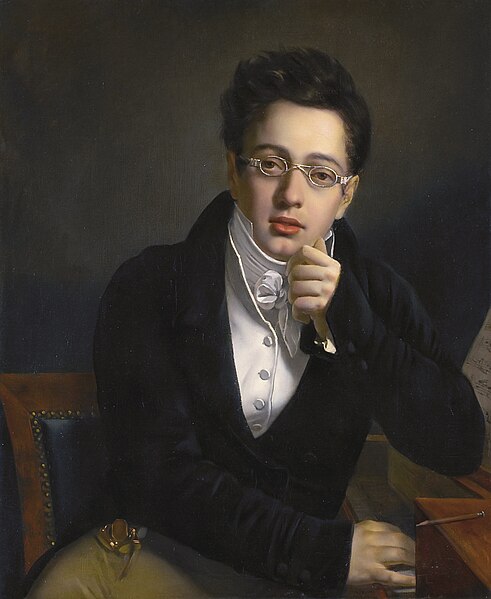Symphony No. 9 (Schubert)
The Symphony No. 9 in C major, D 944, known as The Great, is the final symphony completed by Franz Schubert. It was first published by Breitkopf & Härtel in 1849 as "Symphonie / C Dur / für großes Orchester" and listed as Symphony No. 8 in the New Schubert Edition. Originally called The Great C major to distinguish it from his Symphony No. 6, the Little C major, the subtitle is now usually taken as a reference to the symphony's majesty. Unusually long for a symphony of its time, a typical performance of The Great lasts around one hour when all repeats indicated in the score are taken. The symphony was not professionally performed until a decade after Schubert's death in 1828.
Schubert in 1825
Schubert's letter concerning the Symphony No. 9, D. 944
Franz Peter Schubert was an Austrian composer of the late Classical and early Romantic eras. Despite his short life, Schubert left behind a vast oeuvre, including more than 600 secular vocal works, seven complete symphonies, sacred music, operas, incidental music, and a large body of piano and chamber music. His major works include the art songs "Erlkönig", "Gretchen am Spinnrade", "Ave Maria"; the Trout Quintet, the unfinished Symphony No. 8 in B minor, the "Great" Symphony No. 9 in C major, the String Quartet No. 14 Death and the Maiden, a String Quintet, the two sets of Impromptus for solo piano, the three last piano sonatas, the Fantasia in F minor for piano four hands, the opera Fierrabras, the incidental music to the play Rosamunde, and the song cycles Die schöne Müllerin, Winterreise and Schwanengesang.
The house in which Schubert was born, today Nußdorfer Straße 54
Possible portrait of the young Franz Schubert c. 1814, attributed to Josef Abel
Caricature of Johann Michael Vogl and Franz Schubert by Franz von Schober (1825)
Watercolour of Franz Schubert by Wilhelm August Rieder (1825).





